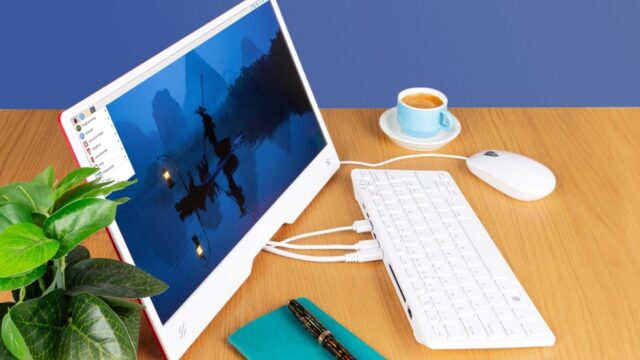From its humble beginnings as a simple motherboard with a few ports, the Raspberry Pi microcomputer can now be purchased as a computer-in-a-keyboard with a monitor.
The new and improved Raspberry Pi 500 builds on the existing Raspberry Pi 400 by upgrading to the same internal capabilities as the Raspberry Pi 5 launched last year. It includes a 2.4GHz quad-core 64-bit Arm Cortex-A76 CPU with 8GB of RAM. There’s a built-in and the ports include a GPIO, 2 x USB 3.0, 1 x USB 2.0 and Gigabit Ethernet.
Fire TV Stick Lite deal
Amazon is selling the Fire TV Stick Lite for 50% off now. You can smarten-up any television for just $14.99
The $90 model (minus a mouse or power supply), can now be purchased with a monitor, effectively turning it into a desktop PC replacement.
The new $100 Raspberry Pi Monitor is a 15.6-inch display HD display, which can even be powered by your Raspberry Pi, or its own USB-C power supply. However, If you do power this model via your Pi brightness will be capped at 60% and volume will hit 50%.
There are built-in speakers, a 3.5mm jack for stereo sound and a standard HDMI port. It has its own kickstand, so its free standing but you can also mount it on a wall, depending on your use case.
The company is selling a pretty sweet $120 bundle, which includes the Raspberry Pi 500, a 32GB SD card, a mouse, a 27W power supply, a 2m micro HDMI to HDMI cable and a printed version of the Raspberry Pi Beginners Guide 5th Edition.
Adding a monitor to this bumps the price up to $220, but this remains a great price for what is the most versatile computing product on the planet, with a completely open source ethos that’s proved to be a wonderful gadget for makers, new coders, and people with big ideas to pursue.
An interesting evolution for Raspberry Pi
I’ll never forget the joy I got from building a retro gaming machine from my Raspberry Pi 2 model probably around a decade ago. The tiny little computer was more than powerful enough to handle those 90s Sega Mega Drive and Super Nintendo ROMs from the 16-bit era, with file sizes around the size of a modern MP3.
With a pair of USB-A controllers and the save state feature I wished I’d had access to back in the day, it was some of the most fun I’ve had with tech. This evolution to an all-in-one package under the Raspberry Pi branding will help more people find an accessible route to building projects of their own.










